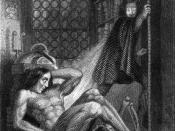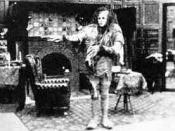Gothic Horror is successful in its adaptive form as its relationship with the universal themes of the human psyche; the ÃÂsufferingÃÂ antagonist whom the reader can sympathise with, and a strong moral message have proven to be relevant through their appropriation reflecting societyÃÂs ever changing fears and values. Frankenstein by Shelley, its 1931filmic appropriation by James Whale, and the contemporary subversion of Gothic Horror SAW, directed by James Wan, altogether spanning over 200 years have been able to maintain this genreÃÂs popularity through their composition which responds to the audienceÃÂs cultural context. Through filmic and literary devices, the aforementioned universal themes are constantly undergoing changes which mirror our fears whilst retaining distinct elements of traditional Gothic concerns.
One consistent fear of society is of insanity overriding our human psyche of consciousness and internalized morals, explored in each three texts via the mentally unbalanced characters who embody, ÃÂthe nightmarish terrors that lie beneath the controlled and ordered surface of the conscious mindÃÂ-Abram.
In Frankenstein, Victor can be seen where he as deluded in hoping to usurp the role of God as ÃÂCreatorÃÂ, an isolated figure bound by his moral transgressions hoping to forge a being in his image. The setting of the attic where he works conveys a sense of secrecy, an unethical means of conduct contrasted to IngolstadtÃÂs open laboratories. Through imagery, Shelley paints a deteriorating state of VictorÃÂs mind- ÃÂMy cheek had gone pale with studyÃÂ Every night I was oppressed by a slow fever, the fall of the leaf startled me and I shunned my fellow creatures as if I had been guilty of a crimeÃÂ. Initially a man with scientific brilliance, turned obsessive with creating life, Victor serves as ShelleyÃÂs message to her audience who lived in the Age of Rationalism. This period encouraged manÃÂs inquisitiveness and...


